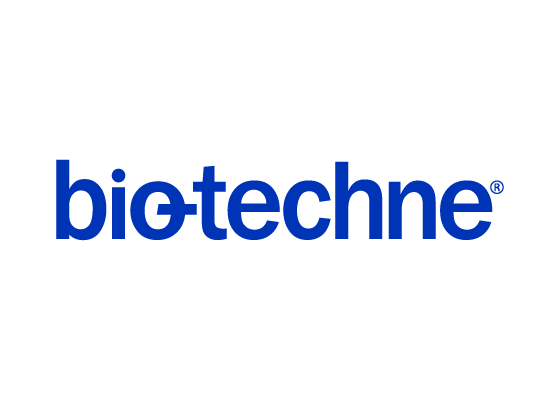E2Select Ubiquitin Conjugation Kit
A rapid and economical method to identify E2 enzyme(s) that functionally interact with an E3 ubiquitin ligase in vitro.
Key Benefits
Eliminates the need to purchase multiple enzymes individually when attempting to identify which E2 enzyme is involved in a particular ubiquitination reaction.
Kit Contents
Each kit contains reagents sufficient to perform 2 ubiquitination reactions for each E2 enzyme included in the kit.
Principle of the Assay
The kit contains an E2Select plate with a panel of 26 E2 conjugating enzymes arrayed in duplicate on a 96 well plate. This configuration allows an experiment to be performed in duplicate, or the testing of two E3s against a single substrate, or the testing of two substrates with a single E3. Two steps are required to initiate reactions. The first is to assemble all the non-E2 reagents except ATP into a Master Mix and add it to each E2 containing well of the plate (except the positive control wells which already contain these reagents). The second is to add 5 µL ATP to all wells to initiate the ubiquitination reactions. After a 60-minute incubation, the reactions are quenched with 5 µL of 5X Sample Buffer for subsequent analysis by SDS-PAGE/Coomassie or Western blot analysis.
- Add Ubiquitination Master Mix to E2 enzymes arrayed on the plate
- Add ATP
- Incubate at 37˚C for 60 minutes
- Add Sample Buffer
- Analyze by SDS-PAGE and Coomassie or Western blotting
Provided in the kit:
- 96-well plate (contains a panel of 26 E2 conjugating enzymes arrayed in duplicate)
| UBE2A | UBE2E1 | UBE2K | UBE2R1 |
| UBE2B | UBE2E3 | UBE2L3 | UBE2R2 |
| UBE2C | UBE2DF | UBE2N/Uev1a Complex | UBE2S |
| UBE2D1 | UBE2G1 | UBE2N/UBE2V2 Complex | UBE2T |
| UBE2D2 | UBE2H | UBE2Q1-2 | UBE2W2 |
| UBE2D3 | UBE2J1 | UBE2Q2-1 | UBE2Z |
| UBE2D4 | UBE2J2 | | |
- 10X Reaction Buffer
- 10X E1 Enzyme
- 20X Ubiquitin
- 4X Mg2+-ATP
- 5X SDS-PAGE Buffer
- Foil Plate Sealer
Other materials required:
- Sterile Deionized Water (dH2O)
- 1M Dithiothreitol (DTT) – for sample buffer when running reducing SDS-PAGE gels
- SDS-PAGE Gel – 10-20% gradient or others; see product datasheet for guidance
- E3 Ubiquitin Ligase – recombinant or purified from cellular lysates
- Substrate (optional) – not required for analyzing E3 auto-ubiquitination
- Coomassie Stain (optional)
- Western Blot Reagants – transfer buffer, primary and secondary antibodies, nitrocellulose or PVDF membranes, and ECL reagents
- Centrifuge with 96-well plate adapter
- 37° C Incubator

| Western blot analysis of E2Select plate reactions looking at Ubiquitination of RPN10/S5a mediated by the E3 ligase AIP4/Itch. In vitro reactions using purified E3 Ligase Itch and S5a substrate. Reactions were analyzed by Western Blot Analysis using an anti-S5a primary antibody. N: Control lane with S5a, but no ATP. P: Positive control reaction showing Ubiquitination of S5a. Note the depletion of the unmodified S5a band and the presence of the high molecular weight smear that is Ubiquitinated S5a. Lanes containing a smear or banding pattern above the unmodified S5a band indicate that the E2 is used by Itch in the Ubiquitination process. In this experiment Itch interacted with UBE2D1, -2D2, -2D3, -2D4, UBE2E1, UBE2E3, UBE2L3, and UBE2W2 to promote S5a Ubiquitination to various extents. In some instances cross-reactivity between the antibody and lower molecular species was observed—this can be minimized by using a lower primary antibody concentration. |
Background: Ubiquitin Conjugation Kits
E2 conjugating enzymes typically interact with one or two E1 activating enzymes (upstream) and potentially hundreds of E3 ubiquitin ligase enzymes (downstream) to form poly-ubiquitin chains. They connect the activation of ubiquitin to the covalent modification of select lysine residues (ubiquitination) found on target proteins. While E3 ligases play an important role, E2’s are the main determinants in substrate selection and which residues of those substrates become mono- or poly-ubiquitinated. Therefore, they can directly control the cellular fate of the substrate. Mechanistically, E3 ligases bind a "charged" E2-ubiquitin thioester conjugate and catalyze the transfer of ubiquitin from the E2 active site cysteine to a substrate lysine (for RING E3s) or to a catalytic cysteine in the E3 itself (for HECT and RBR E3s).
Due to the complexity of the ubiquitin conjugation system, it can be challenging to determine which E2 conjugating enzyme(s) are utilized by a recently discovered or poorly characterized E3 ligase. The investigator may set up an in vitro ubiquitination reaction using an E1 activating enzyme, Ubiquitin, ATP, and the E3 ligase of interest, but the appropriate E2 for the reaction may not be known. Considering there are approximately 35 active E2 enzymes in humans (15-35 in other eukaryotes), the cost of purchasing each recombinant E2 individually may be cost prohibitive.
We offer the E2Select kit as a practical solution to this problem by supplying two reactions worth of a panel of 26 E2 conjugating enzymes contained in a 96 well plate. The kit is designed to help identify which E2 enzymes facilitate in vitro substrate ubiquitination catalyzed by a recombinant E3 ligase and substrate of choice using SDS-PAGE with Coomassie or Western blot analysis.
Ubiquitin is a 76 amino acid (aa) protein that is ubiquitously expressed in all eukaryotic organisms. Ubiquitin is highly conserved with 96% aa sequence identity shared between human and yeast Ubiquitin, and 100% aa sequence identity shared between human and mouse Ubiquitin. In mammals, four Ubiquitin genes encode for two Ubiquitin-ribosomal fusion proteins and two poly-Ubiquitin proteins. Cleavage of the Ubiquitin precursors by deubiquitinating enzymes gives rise to identical Ubiquitin monomers each with a predicted molecular weight of 8.6 kDa. Conjugation of Ubiquitin to target proteins involves the formation of an isopeptide bond between the C-terminal glycine residue of Ubiquitin and a lysine residue in the target protein. This process of conjugation, referred to as ubiquitination or ubiquitylation, is a multi-step process that requires three enzymes: a Ubiquitin-activating (E1) enzyme, a Ubiquitin-conjugating (E2) enzyme, and a Ubiquitin ligase (E3). Ubiquitination is classically recognized as a mechanism to target proteins for degradation and as a result, Ubiquitin was originally named ATP-dependent Proteolysis Factor 1 (APF-1). In addition to protein degradation, ubiquitination has been shown to mediate a variety of biological processes such as signal transduction, endocytosis, and post-endocytic sorting.



